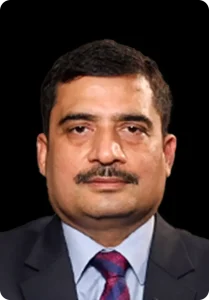The unavailability of locally-relevant fifth generation or 5G use cases is a grim reminder of the industry’s preparedness as they roll out networks in the country.
With the next generation-backed services reaching consumers in select cities, revenue is set to be driven by enterprise customers who although seem less receptive to the low-latency-based new technology, set to usher Industry 4.0.
However, many of the use cases are yet to emerge and some others are on the horizon. But it’s high time for the telecom industry to develop use cases for enterprises for experimentation and trial. Telecom carriers, on the other hand, want to monetise 5G applications to recover network and spectrum investments in a low average revenue per user regime.
According to a Nokia-Omdia study “A build it and they will come” approach won’t be enough for telcos to fully capitalize on 5G’s enormous commercial potential. Instead, communication service providers (CSPs) must proactively develop 5G use cases, pursue partnerships outside their own industry sandbox and pivot from pushing technology to solving business problems,” the study said.
Indian telcos currently offering 5G services — Reliance Jio and Bharti Airtel have been vocal in expressing their disappointments over lack of “killer use cases”.
Neil Shah, analyst, Counterpoint Research says, “Indian 5G story is still in nascent stages and all the operators will take different journeys. The number of 5G use cases to be unlocked is a function of ubiquitous and denser 5G coverage which is still rolling out. We would see more 5G use cases rolling out starting the second half of next year at scale.”
5G enabling smart factories
Amidst all, enterprises are now taking first steps to engage with telcos to fully tap the 5G strengths.
The country’s largest passenger car maker Maruti Suzuki has scaled up to the 5G technologies to step up digital transformation and is currently doing proof of concept with partners for its application in critical areas like acquisition of data at high speed from smart machines to drive various IoT, analytics and AI use cases.
Partnering with telcos for PoC, the car maker has embraced 5G technology to explore 5G use cases such as smart factories.
“With the help of 5G technologies like IoT, Maruti has a vision to enable smart factories capabilities by 2025,” Shashank Srivastava, senior executive officer of marketing and sales Maruti Suzuki said.
Indian telecom operators like Airtel and Jio are looking to tap India’s private network opportunities and are eyeing the automobile sector. Airtel, for instance, recently deployed a private 5G network at Mahindra’s Chakan manufacturing facility under a strategic partnership with Tech Mahindra. Mahindra’s Chakan facility has become India’s first 5G-enabled automobile manufacturing unit.
Medical 5G use cases imminent
It is not just the auto industry, the healthcare sector is also warming up to the 5G technology engagement. One of the hospital chains in the country Max Healthcare is already on the forefront of this.
“Max healthcare is already leveraging Robotic Process Automation (RPA) for different processes in hospital workflows. This will decrease workload, increase accuracy and let the workforce focus on value added activities. On the clinical front, it has been investing in robotic systems for surgery, this will decrease length of stay and increase accuracy with a better prognosis for the patient. The use of machine learning and artificial intelligence will also lead the care provider to monitor the patients more efficiently,” says Prashant Singh, director IT and chief information officer, Max Healthcare.
Like Maruti Suzuki, Max Healthcare is also in talks with telecom service providers for use cases in 5G.
“Max Healthcare is in touch with various partners who can co-create patient care delivery models, which can provide seamless digital experience for our users at both the ends. We are having discussions with providers for identifying and developing use cases for 5G applications in the healthcare ecosystem,” Singh adds.
Not to be left behind the country’s premier healthcare institute, the All India Institute of Medical Science (AIIMS) is also chasing a technological highway on 5G.
“Many of the leading hospitals in the world have started experimenting with technologies that utilize 5G Networks for improving patient care. We are also trying to explore some of these areas,” Dr Vivek Tandon, professor, department of neurosurgery at AIIMS, Delhi, said.
5G can enable emerging technologies like augmented reality (AR) and virtual reality (VR) to enhance medical training, surgical planning, and patient education. Surgeons can visualize complex anatomical structures, simulate procedures, and provide immersive experiences to patients, Tandon says.
It’s not just critical sectors, enterprises have started looking at the application of 5G possibilities in traditional sectors like mining and ports.
They are stepping up digital transformation around 5G with key initiatives at ports and mines using robotic process automation , artificial intelligence (AI) and IoT, ML and VR.
5G use cases in ports vital
5G-backed high bandwidth, low latency and the ability to support a massive number of devices can enable new and improved opportunities to increase ports’ operations efficiency, in addition to helping enable new business models, enhance worksite safety and reduce operational costs, says a Deloitte report.
Essar Ports, one of the largest ports in India with a capacity of 168 MMTPA agrees to it.
“Over the years Essar Ports has developed 168 MMTPA Ports capacity in India through investment in excess of USD 1.5 Billion with technology and automation at core. The result is our facilities offer best in class services which can be benchmarked across the globe. With Essar’s focus on energy transition, we will continue to ensure that our solutions are sustainable and enable the pace of our customers’ business”, Rajiv Agarwal, MD, Essar Ports says.
The benefit of 5G technology is not only speed but also its capability to transport vast amounts of data. There are various types of business cases of IoT and 5G technologies in the ports sector. Some of them are connected infrastructure where IoT creates a connection between ports & terminals infrastructure like vessels, cargo/ containers, equipment, checkpoints enabling seamless flow of data and information enabling the pace of business, he pointed out.
“Monitoring connected port ecosystems enhancing operation efficiency through automation, predictive maintenance and system uptime, managing traffic, monitoring and optimizing energy use, safety checks, managing traffic and seamless data exchange for faster turnaround. As the nation grows, we will have a huge requirement of Indian ports for movement of EXIM and domestic cargo – these use cases will give the sector the edge to address the needs of a growing economy,” the MD said.
Mines need most of 5G
Some 86% of mining companies say they plan to invest in wireless infrastructure in the next 18 months, according to an IDC 2021 Worldwide Mining Decision Maker Survey.
Most named 5G as their priority because of its lower latency and higher bandwidth, which suggests industry members understand high-performance private wireless networks are essential to fulfilling the promise of Mining 4.0.
Anil Chaudhary, Group CEO – Metals and Mining at Essar says “5G Networks provide immense potential in automation and remote operations of the mining industry. The developments like self-driven vehicles, real time monitoring, remote controlled drills, inspections with unmanned drones, intelligent controlled ventilation, will not only improve the productivity and reduce the cost but also make the life comfortable of those working in this hazardous industry.”
Analysts’ views on emerging 5G use cases
The sector observers are of the view that Indian enterprises are now using 5G technologies to benefit their operations and yield better results in productions, and services.
Pulkit Pandey, principal analyst, Gartner says the utilization of 5G technologies like AI and ML to enhance efficiency and yield by enterprises has started.
“Few enterprises are utilizing 5G technologies to enhance their operational efficiency. They are using 5G technologies in conjunction with other technologies such as Artificial Intelligence (AI) and Machine Learning (ML). There are enterprises, which have announced their plans to expand their operations in order to cater to specific industries and utilize the benefits of 5G. These industries include mining, agriculture, healthcare and ports,” he adds.
On a broader use case growth level, he says enterprise adoption of 5G is at a steadier pace in comparison with the Communications Service Providers (CSPs). While CSPs went all in on 5G and are continuing to do so, enterprises on the other hand are gradually moving into 5G adoption, in specific industries and as per the demands.
Drawing a parallel between 5G use cases globally and Indian enterprises, the analyst says there are several industries that are leading with respect to 5G adoption. Manufacturing, automotive and healthcare were the leading industries with respect to 5G adoption, however, we have noted an increase in demand for 5G-related investments in energy and transportation industries. These industries, in addition to agriculture, mining and ports should be taking up 5G adoption faster than others in India.
The issue and need for large scale adoption of 5G technologies in enterprises has been in the air for sometime now, Pandey sums up.
Both Bharti Airtel and Reliance Jio who offer 5G networks in all major cities across India have said they are not seeing any killer use cases of 5G technology which can help operators to monetize their investments in the 5G field.
Amongst the Indian telcos, Counterpoint Research’s Shah says Jio will focus on 5G FWA with content bundling with, connected retail, private network with network slicing, 5G education campuses. While Jio will take a more vertical approach, Airtel will opt for a partnership model.
Rahul Vatts, chief regulatory officer at Bharti Airtel says definitely there are no killer use cases in India right now even though societies like Korea have got gaming, which is driving the 5G uptake.
SP Kochhar, director general of the Cellular Operators Association of India (COAI) says nowhere in the world do we have use cases exclusively for 5G except in the area of gaming.
For trying out 5G use cases, a beginning has been made on a small scale though but if both stakeholders — telcos and enterprises — live up to their roles, then India could indeed be a solution provider of 5G use cases globally.
Source: ET Telecom.com














































